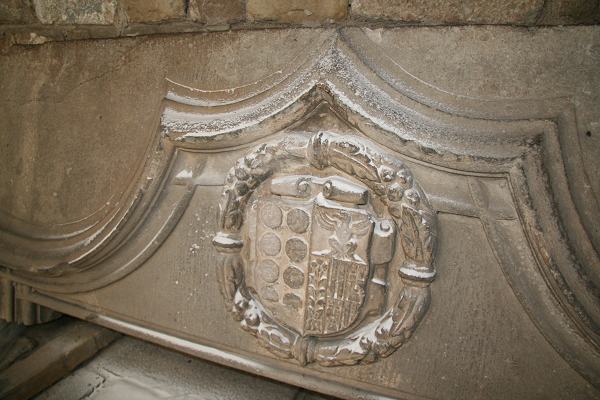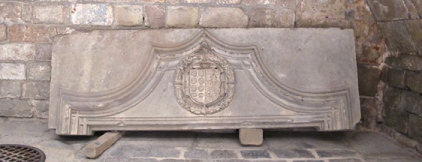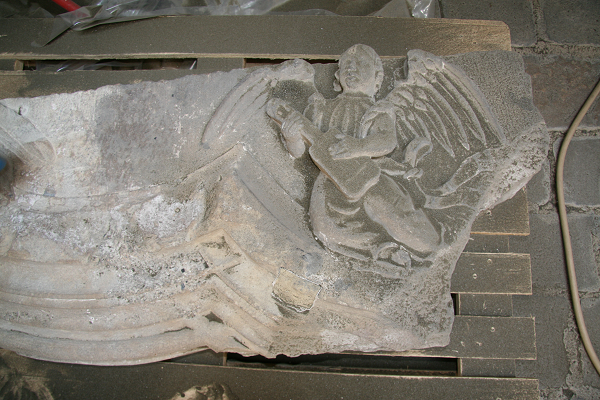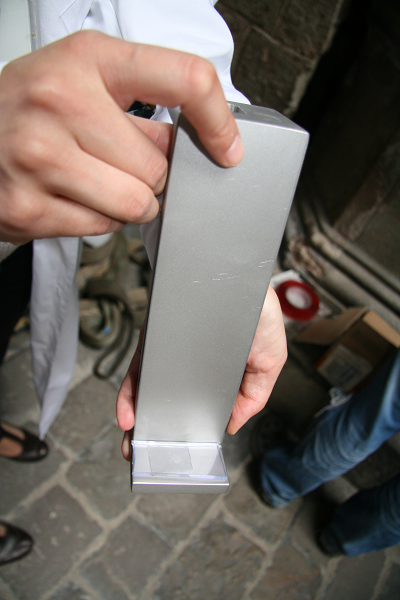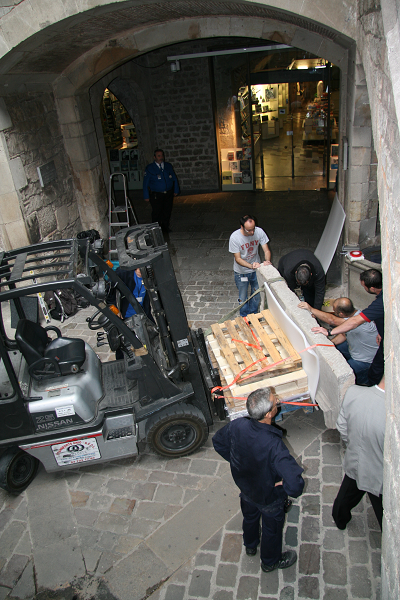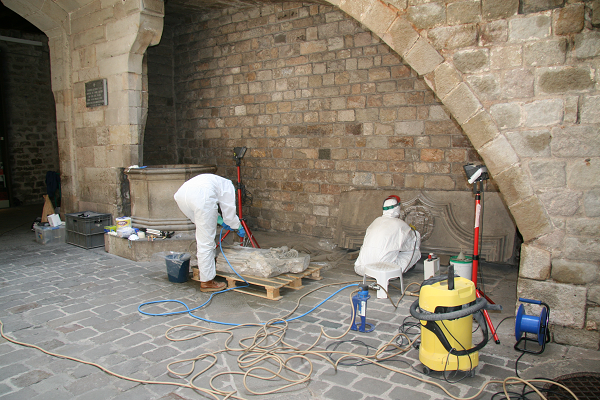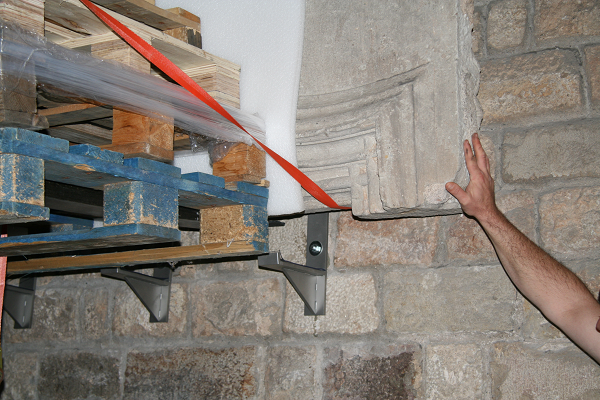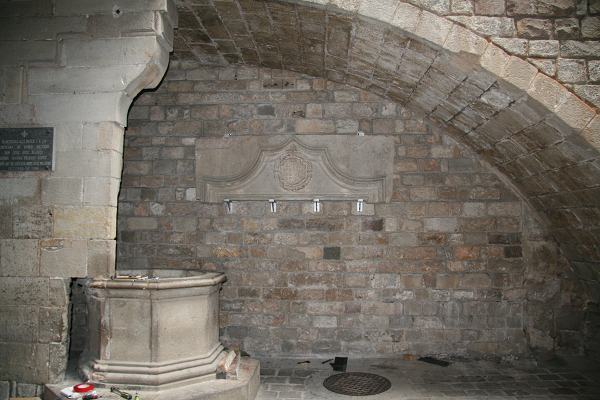In 2013, two fragments of sculptural elements from the architectural heritage collection of the museum were restored. They were placed on the ground of the courtyard of the Palau Aguilar, it is not known exactly when, and they have been testimony over the years to the different renovations of the buildings by their successive owners. Even though their origin is still to be determined, due to their formal and decorative characteristics they are perfectly compatible with their whole setting and we can therefore situate them around the 16th century.
Large piece prior to restoration with the coat of arms of the Montcada-Aguilar family
The fragments are cut in stone from Montjuïc and each one is decorated with figurative motifs in relief and moulded elements, and it seems that they formed part of the decoration of a door or a window. At the time of their restoration these pieces were found under the exterior staircase that provides access to the first floor of the Palau Aguilar.
The biggest piece, with approximate dimensions of 79 x 225 x 23 cm, has a sculpted arch in relief with the coat of arms of the Montcada-Aguilar family in the centre, surrounded by garlands of flowers and fruits. It is a single rectangular piece, which is a characteristic of the structure of a dentil. In the area of the coat of arms there are remains of white and ochre covering.
Large piece, before and after the restoration
The small piece is a fragment of one of greater size and has approximate dimensions of 50 x 102 x 16 cm. It presents part of the mouldings of an arch of a door or of a window, with an angel musician in the upper right-hand corner and part of another on the left-hand side.
Small piece prior to restoration with an angelic musician
Given the dimensions and the weight of the pieces and to minimise the movements, a small workshop was created in the courtyard itself to carry out the restoration. The restorer Javier Chillida and his team carried out the careful cleaning, eliminating the dirt accumulated over the years, as well as the different remains of cement mortar.
Anchorage to sustain the restored pieces | Forklift truck
This intervention has allowed the recuperation of the volume and to conserve those remains of colour applied over the centuries. So as to improve the conditions of conservation and presentation, once the restoration and cleaning of the pieces was complete, they were removed from the ground so as to be installed in the space of the museum. As it seems that the two pieces formed part of the upper decoration of a door or window, a location of a certain height was sought.
Restoration team | Anchoring of the piece in the new location
For the installation of the pieces the assistance of a specialised team was required. The company Relluc, with extensive experience in museology, was charged with the handling and production of the anchorage. As the biggest piece weighed around a tonne, it was necessary to have a forklift truck: it was a complex and delicate operation that was successfully carried out, and now the two pieces can be seen in their plenitude and in conditions that preserve them for the future.
Large piece hung in its new location. Photos: Department of Preventive Conservation and Restoration
Reyes Jiménez
Head of the Preventive Conservation and Restoration Department

